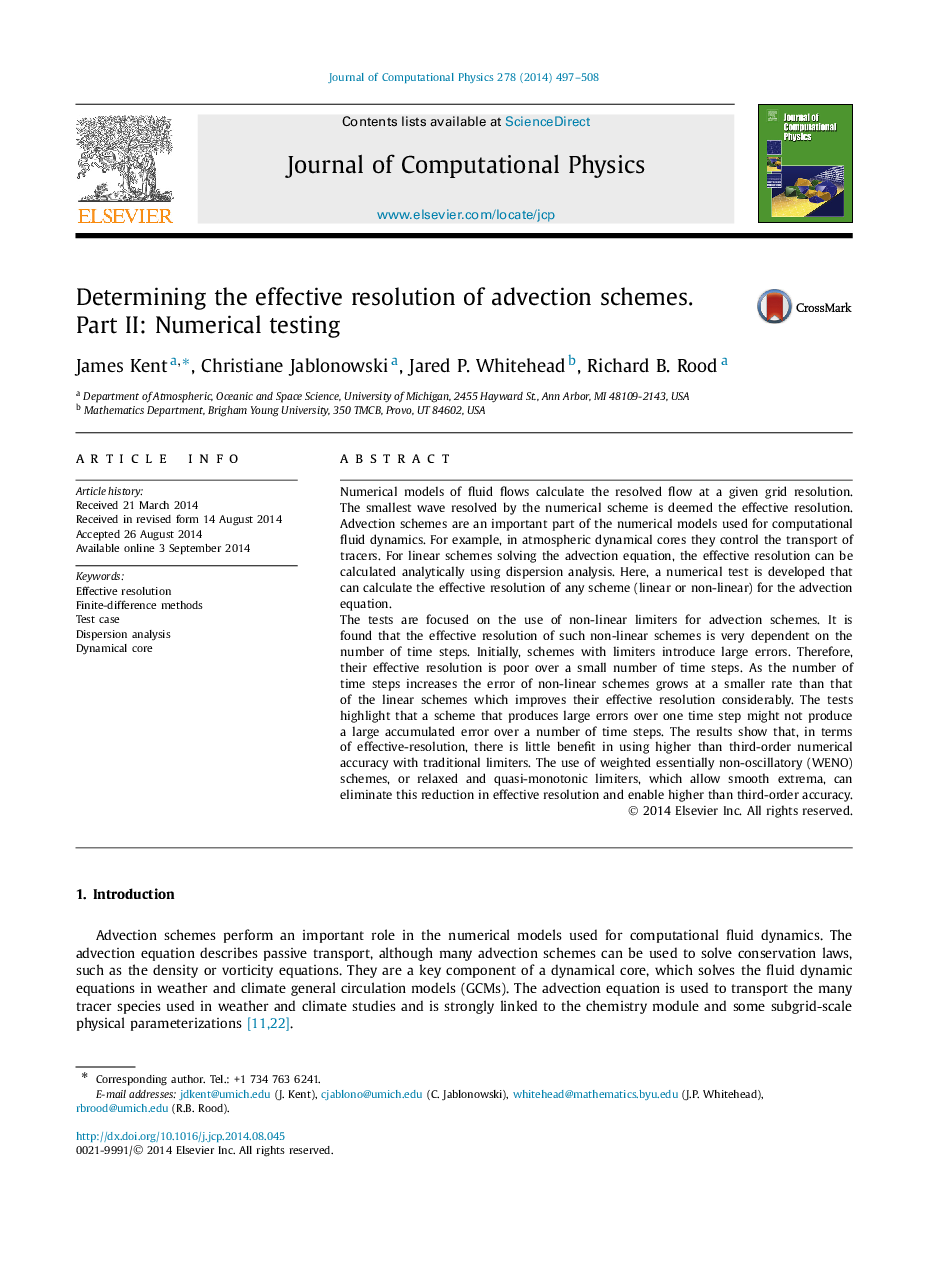| Article ID | Journal | Published Year | Pages | File Type |
|---|---|---|---|---|
| 6932292 | Journal of Computational Physics | 2014 | 12 Pages |
Abstract
The tests are focused on the use of non-linear limiters for advection schemes. It is found that the effective resolution of such non-linear schemes is very dependent on the number of time steps. Initially, schemes with limiters introduce large errors. Therefore, their effective resolution is poor over a small number of time steps. As the number of time steps increases the error of non-linear schemes grows at a smaller rate than that of the linear schemes which improves their effective resolution considerably. The tests highlight that a scheme that produces large errors over one time step might not produce a large accumulated error over a number of time steps. The results show that, in terms of effective-resolution, there is little benefit in using higher than third-order numerical accuracy with traditional limiters. The use of weighted essentially non-oscillatory (WENO) schemes, or relaxed and quasi-monotonic limiters, which allow smooth extrema, can eliminate this reduction in effective resolution and enable higher than third-order accuracy.
Related Topics
Physical Sciences and Engineering
Computer Science
Computer Science Applications
Authors
James Kent, Christiane Jablonowski, Jared P. Whitehead, Richard B. Rood,
